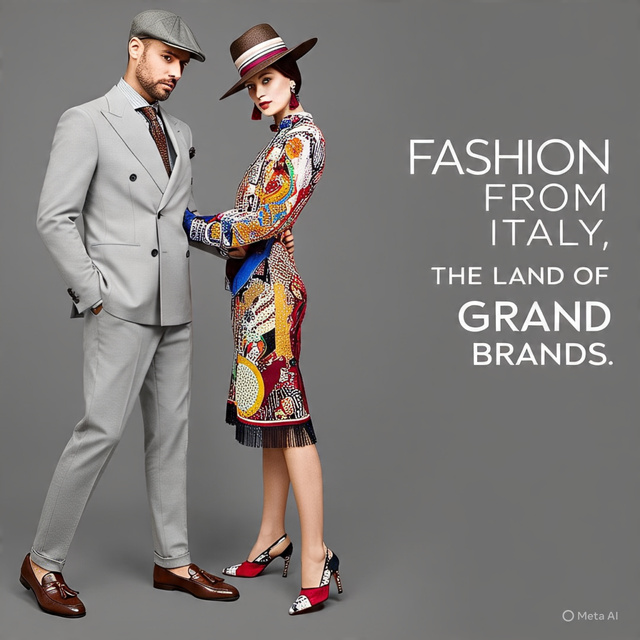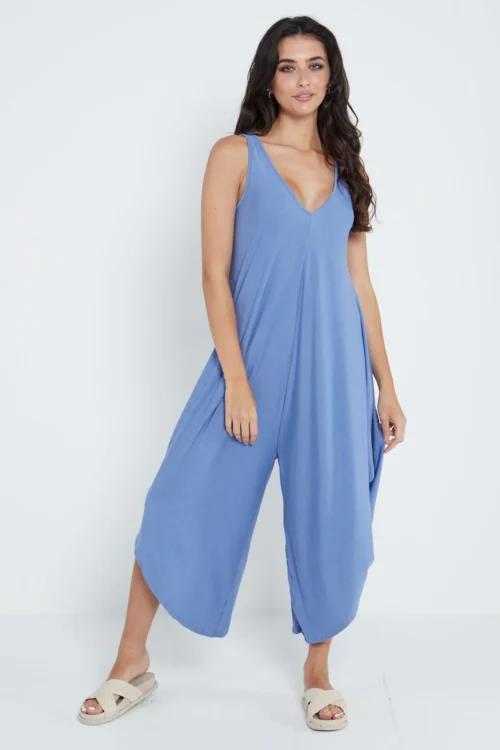Italy, the Land of grand brands, the powerhouse of modern fashion, the birthplace of sprezzatura and pitti Uomo, has a legacy to be proud of. It’s not just the luxury brands of the modern era, but it’s also the traditional fashion. Yes Italy has that traditional side apart from these well known labels. This article is going to show you the lesser known side of Italian fashion, the traditional, ethnic face of Italian fashion. We’ll dive into Italy’s traditional fashion that was born in this country and the people are proud of this heritage. We’ll discuss Italy’s traditional men’s attires, ladies clothing items, fashion accessories and jewelry. Let’s get started.
Italian traditional garments for women:
Ladies first as they say, we’ll begin with ladies’ most popular traditional dresses worn in Italia.
1. Tarantella Dress (Southern Italy/Campania and Sicily)
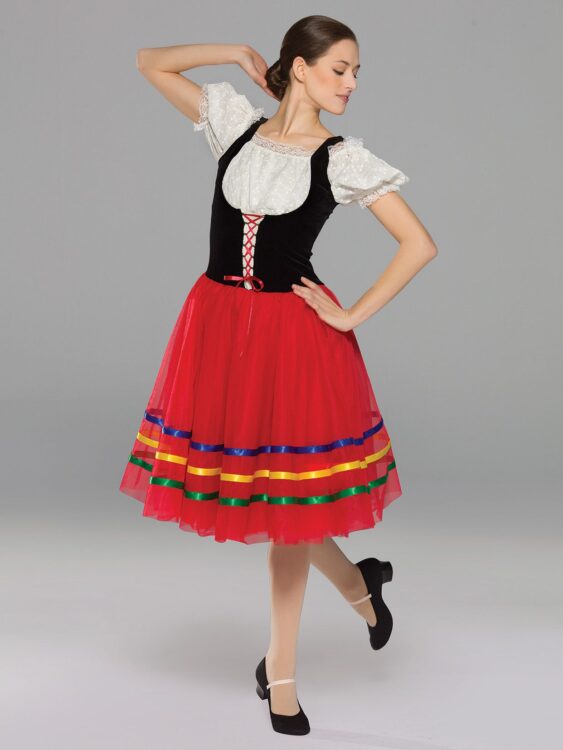
The Tarantella dress is a lively, colorful folk costume traditionally worn by women performing the Tarantella, a spirited dance from Southern Italy. Typically featuring a fitted bodice, puffed sleeves, and a full-tiered skirt, the dress is often adorned with lace, ribbons, and embroidery in regional colors like red, green, and white. Made from cotton or lightweight fabrics, it allows ease of movement. Deeply rooted in Campanian and Sicilian culture, it represents joy, heritage, and rural festivity in Italian folklore.
2. South Tyrolean Dirndl (Trentino-Alto Adige):
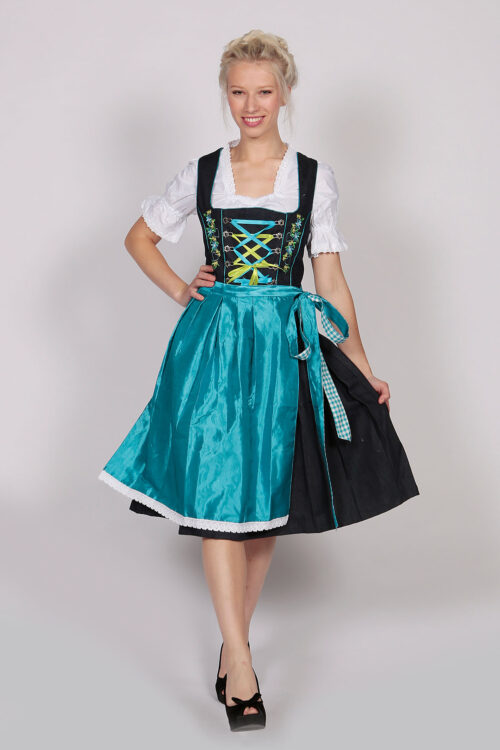
The South Tyrolean dirndl is a traditional Alpine dress worn in Trentino-Alto Adige, a region blending Italian and Austrian heritage. It includes a fitted bodice, full skirt, white blouse, and apron, often in rich colors and floral patterns. Made from wool, cotton, or linen, it is worn during festivals and cultural events. Though the dirndl is Austro-Bavarian in origin, the South Tyrolean version is a proud symbol of regional identity and Italian-Germanic cultural fusion in the mountainous north.
3. Florentine Renaissance Gown (Tuscany)

The Florentine Renaissance gown, worn by noblewomen during the 15th–16th centuries in Florence, is a masterpiece of Italian historical fashion. These gowns featured square necklines, fitted bodices, long flowing sleeves, and layered skirts, often crafted from luxurious silk, velvet, and brocade, and embellished with gold thread and jewels. Florence was a fashion capital during the Renaissance, and these gowns reflected both status and artistry. Today, they’re celebrated in reenactments and costume festivals, highlighting Tuscany’s rich sartorial legacy.
4. The Tubino dress:
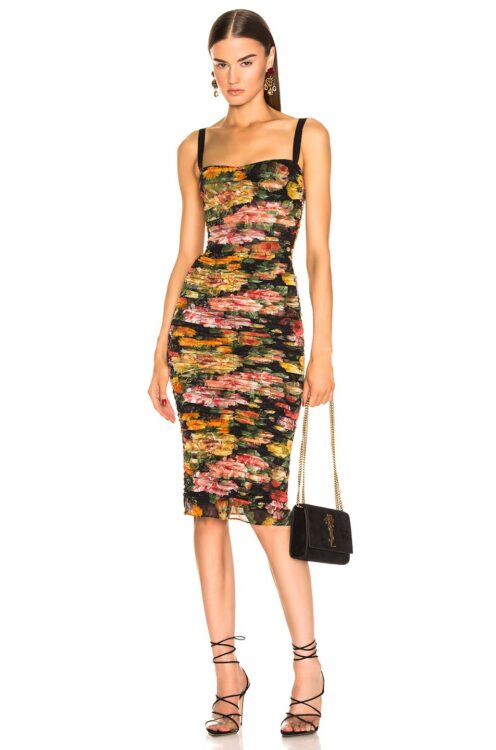
The Tubino dress is Italy’s sleek interpretation of the classic sheath dress, known for its clean, body-hugging silhouette, knee-length cut, and minimal embellishments. Typically made from high-quality jersey, wool crepe, or silk blends, it became popular in the 1950s and 60s, often associated with Italian screen icons like Sophia Loren. Designed to flatter the female form, the Tubino is a staple of refined Italian elegance—versatile enough for both office and evening wear, and forever chic.
5. Majolica Print Dress
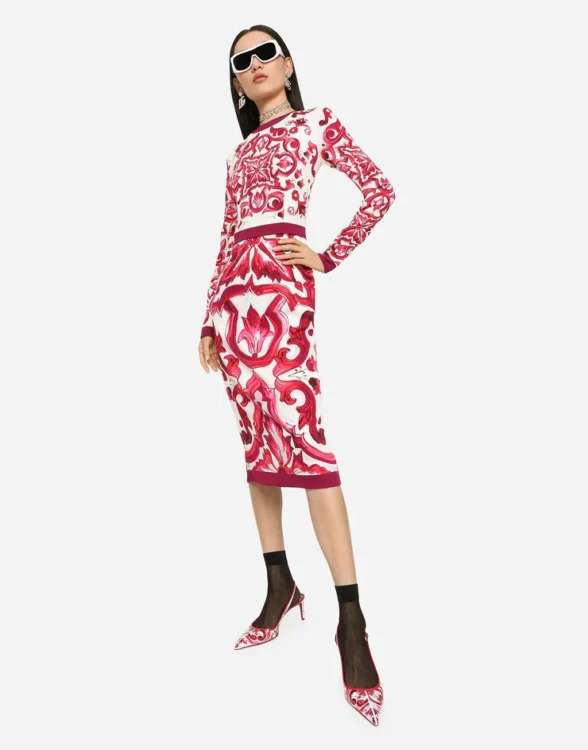
The Majolica print dress features intricate Sicilian tile-inspired patterns in blue, yellow, and white, evoking Mediterranean elegance. Popularized by Dolce & Gabbana, it’s a staple for summer vacations and resort wear, often paired with straw hats and gold jewelry, celebrating Italy’s rich ceramic art and coastal heritage. Italy’s fashion
6. Pucci Print Dress
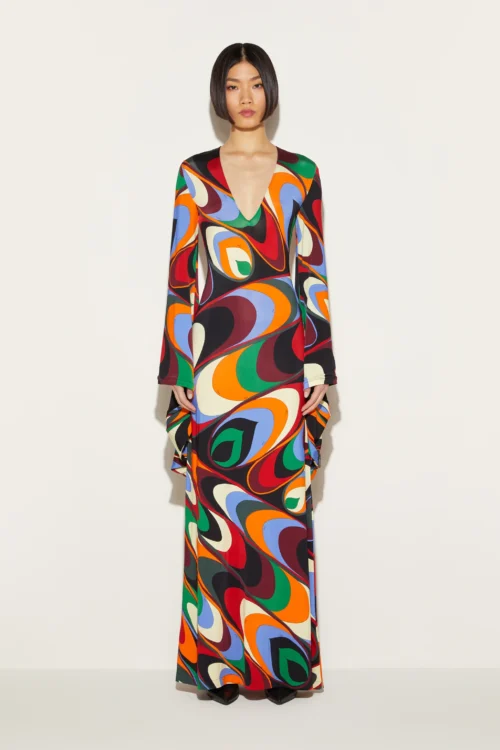
The Pucci print dress showcases vibrant, swirling geometric patterns in bold, psychedelic colors, a signature of Emilio Pucci’s 1960s designs. A symbol of luxury and retro glamour, it’s often worn as flowy maxi dresses or silk tunics, paired with minimal accessories, embodying playful elegance and high-fashion sophistication.
7. Opera Cape:
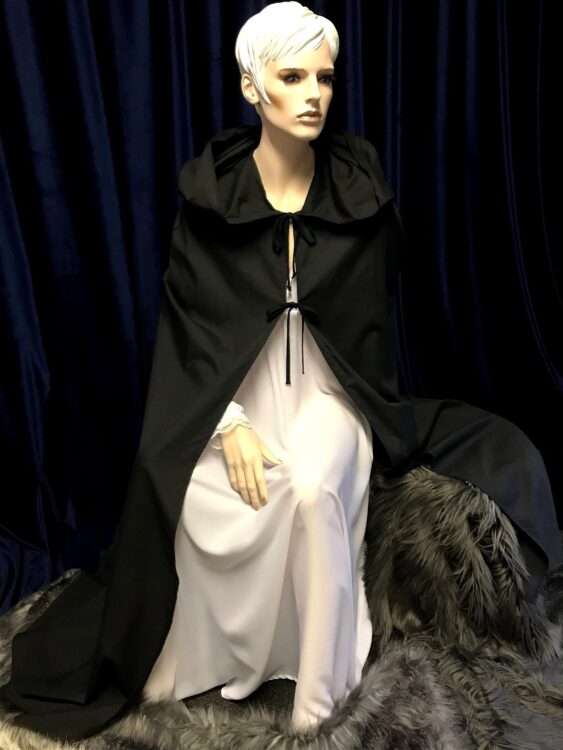
The opera cape is a luxurious, floor-length outer garment traditionally worn over evening wear to the opera or formal events. It typically features a collar or hood, no sleeves, and a loose, flowing silhouette, allowing it to drape elegantly over gowns or tuxedos. Made from sumptuous fabrics like velvet, silk, or wool, and often lined with satin, the opera cape originated in 19th-century Europe, with Italy—particularly Milan and Venice—playing a key role in its popularity through their rich operatic culture and couture tailoring. It remains a symbol of dramatic flair and refined sophistication. image source
Men’s iconic traditional garments from Italy.
Now it’s time to turn our attention to Italian fashion traditions for men, or iconic men’s garments of Italian origin, after all we are discussing Italy’s fashion.
1. The Italian Cut Suit:
The Italian cut suit is a globally admired symbol of Italian tailoring. Known for its slim silhouette, high armholes, and shorter jackets, it exudes elegance and confidence. Often crafted from fine wools or lightweight fabrics ideal for Mediterranean climates, it focuses on clean lines and stylish fit. Originating in Milan and refined in Florence and Rome, this suit style highlights Italy’s fashion leadership, fusing tradition with trend to create garments worn by stylish men worldwide.

2. Neapolitan Jacket:
The Neapolitan jacket is a soft-shouldered, lightly constructed men’s blazer that emerged from Naples. It’s defined by its unstructured form, minimal lining, natural shoulder (spalla camicia), wide lapels, and signature barchetta pocket. Made from breathable materials like wool, linen, or cashmere, it prioritizes comfort and ease without sacrificing style. Invented in the early 20th century as a relaxed alternative to British tailoring, it represents Southern Italy’s flair for relaxed elegance and is a cornerstone of modern Italian menswear.
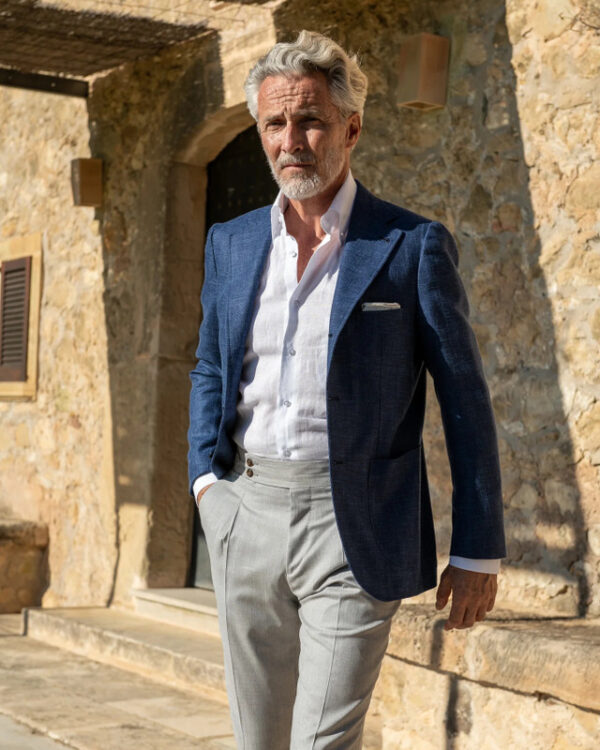
3. Chiavari Pants:
Chiavari pants are high-waisted, slim-fitting trousers from the Liguria region, traditionally worn by fishermen and workers. Made of durable wool or cotton, they feature a straight leg and minimal detailing, offering both elegance and practicality. Today, they inspire modern tailored trousers, blending heritage craftsmanship with contemporary menswear.
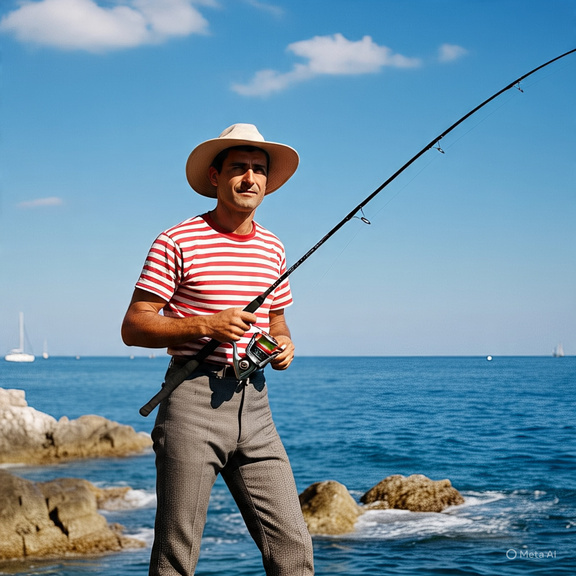
4. Tabarro Cloak
The Tabarro is a long, flowing cloak with no sleeves, traditionally worn by Venetian nobles, farmers, and intellectuals. Typically made of heavy wool, it has a single clasp at the neck and a dramatic, draped silhouette. Though rare today, it remains a symbol of Italian mystery and elegance, often seen in historical reenactments.
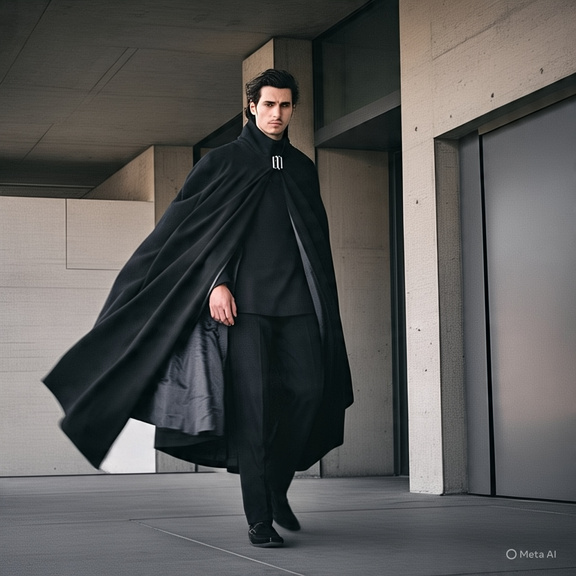
5. Gilet
The Italian gilet is a sleeveless vest worn over shirts, offering both warmth and style. Traditionally part of three-piece suits, Italian versions are often made from lightweight fabrics like silk or linen for summer wear. Modern gilets, including quilted and suede versions, are essential layering pieces in Italian casual and formal wardrobes.
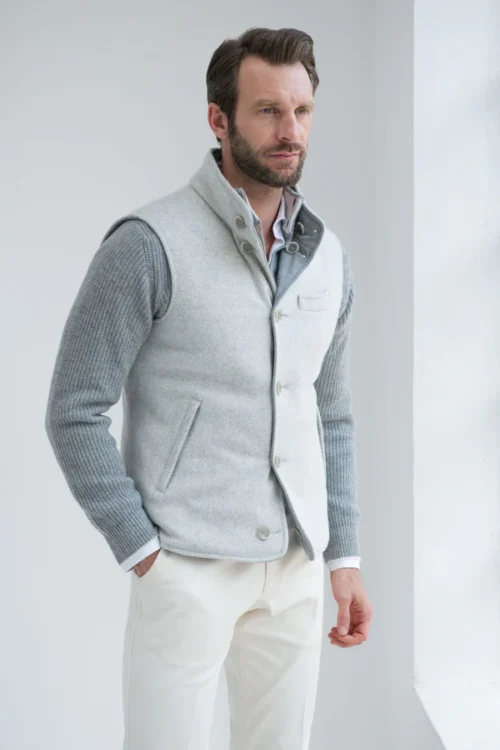
6. Alla Zuava Pants
Inspired by Zouave military uniforms, Alla Zuava pants are loose-fitting, cropped trousers with a tapered leg and buttoned cuff at the ankle. Originating in Northern Italy, they were worn by peasants and artisans. Today, their unique silhouette influences modern workwear and street fashion, blending history with contemporary style.
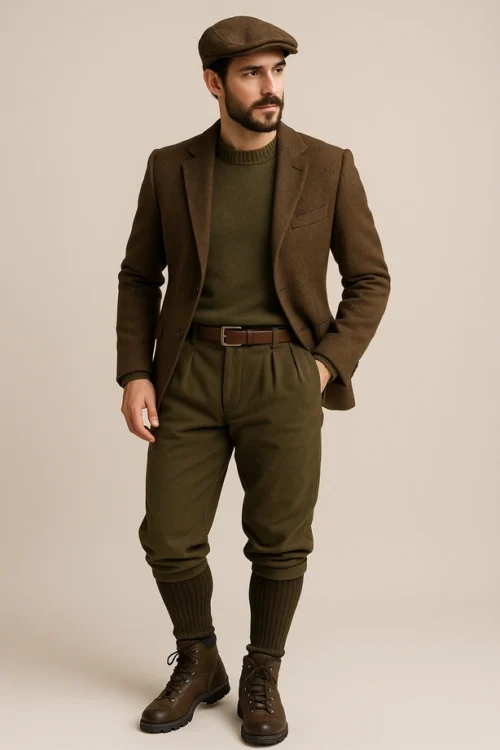
8. Valstarino Jacket
Introduced in 1935 by Valstar, the Valstarino jacket is a suede blouson with a ribbed hem, cuffs, and a buttoned front. Unlike bulkier jackets, it has a slim, refined fit and a luxurious texture, making it a casual-luxury staple. Its design inspired modern suede bombers, bridging sportswear and sartorial style. image source
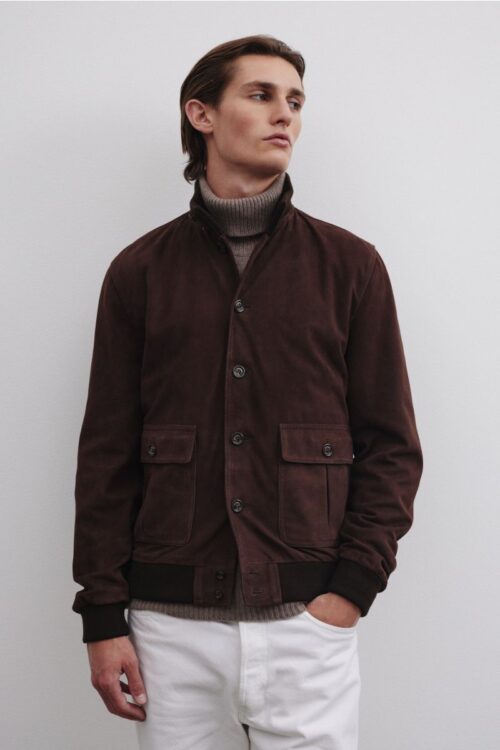
9. Sahariana Jacket
The Sahariana is Italy’s elegant take on the safari jacket, blending military practicality with tailored sophistication. Made from lightweight linen or cotton, it features four patch pockets, a belted waist, and a soft construction. Originally for explorers and hunters, it’s now a refined summer jacket, worn with chinos or tailored trousers.
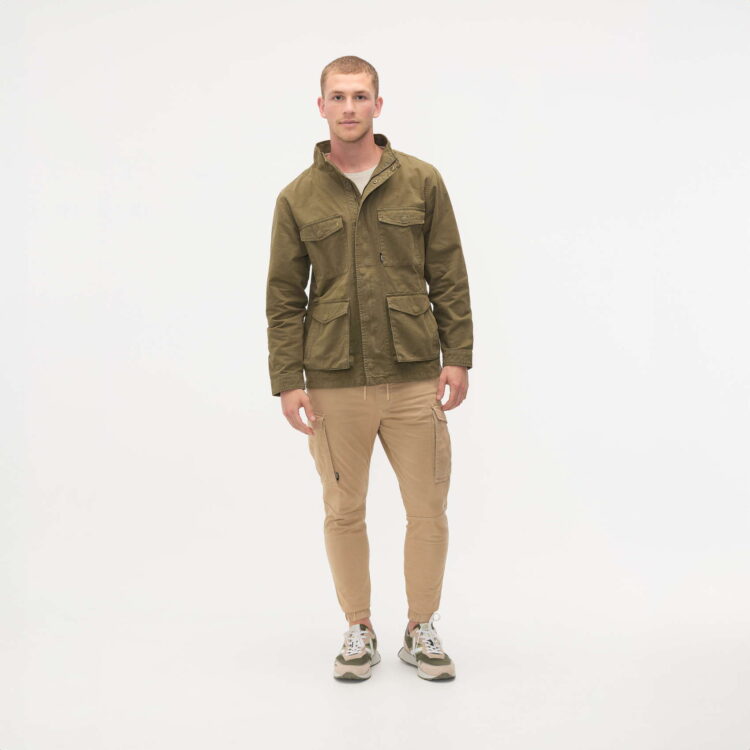
10. Gondolier Hat and Striped Shirt:
The gondolier outfit is a traditional Venetian ensemble worn by boatmen navigating Venice’s canals. It features a flat-topped straw boater hat with a wide brim and trailing ribbon, designed to shield from the sun. Paired with a horizontal striped shirt—typically in blue, red, or black—it reflects maritime tradition and national flair. Often made of breathable cotton or linen, this iconic outfit blends function with heritage. It’s a beloved symbol of Venice’s romantic charm and timeless Italian style. Italy’s fashion…
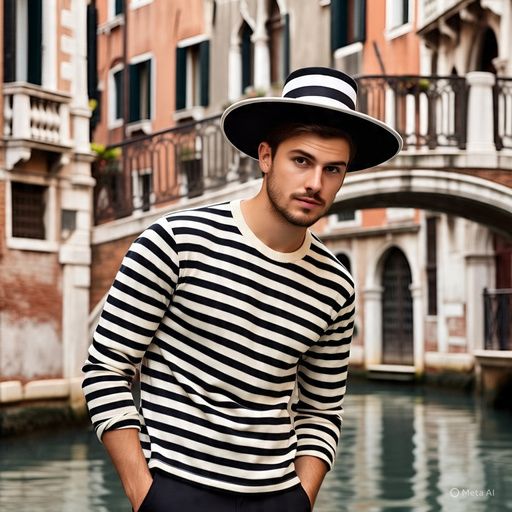
Italy’s Unsung Fashion Firsts!
When people talk about Italian fashion, it’s usually the big designer names that get all the spotlight. But Italy’s contribution to what we wear today goes way beyond luxury brands and runways. Tucked behind the glamour are some low-key but brilliant inventions—clever designs and timeless pieces that quietly reshaped wardrobes around the world. Here’s our pick of these unsung innovations that’ll make you fall in love with Italian fashion ingenuity all over again.
1. Jumpsuit
The jumpsuit—originally a utilitarian one-piece worn by aviators—was transformed into a fashion icon by Italian designer Elsa Schiaparelli in the 1930s. She was the first to present it on a couture runway, reimagining it in silk and wool blends, with a bold, feminine silhouette. Today, jumpsuits are made from materials like cotton, crepe, or jersey, worn as chic alternatives to dresses. Schiaparelli’s avant-garde flair helped turn this functional garment into a high-fashion staple.
2. Stiletto heel:
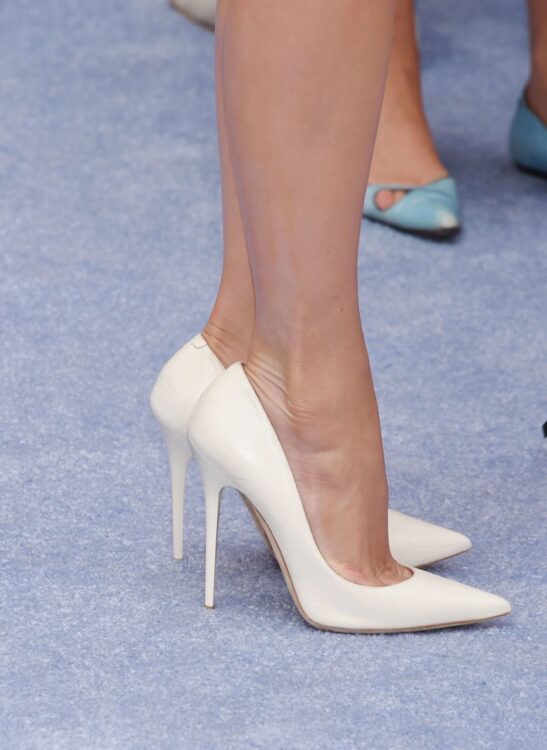
The stiletto heel owes much of its iconic status to Italian designer Salvatore Ferragamo, who pioneered metal-reinforced heels in the 1950s. The term stiletto comes from the Italian word for a dagger, reflecting the shoe’s slim, tapered heel—often 3 inches or higher. Typically crafted in leather, suede, or satin, stilettos became a symbol of feminine power and sensuality. Ferragamo’s engineering genius and aesthetic vision helped define this elegant heel’s place in fashion history.
3. Driving Loafers
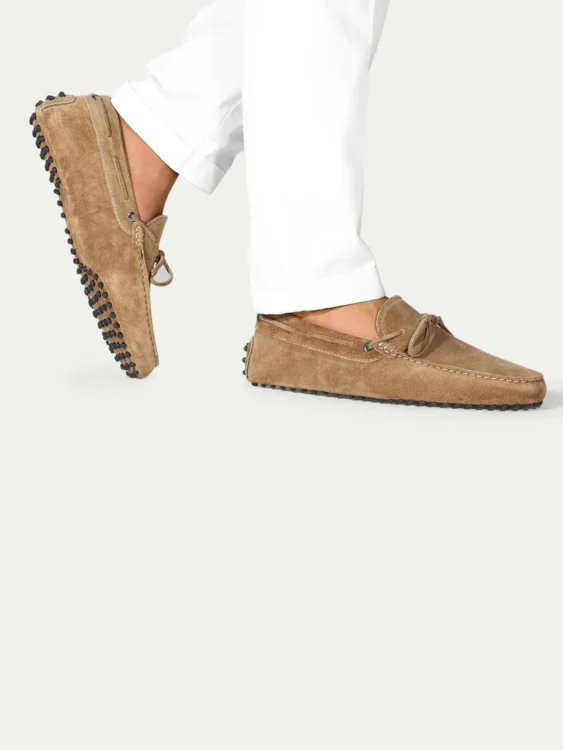
Driving loafers—also known as car shoes—were invented in Italy in 1963 by Gianni Mostile, founder of the brand Car Shoe. These moccasin-style shoes are distinguished by their rubber pebble sole that extends to the heel, offering grip and flexibility for driving. Made from soft leather or suede, they blend function with casual luxury. Today, brands like Tod’s have further elevated their design, making them a globally recognized Italian footwear innovation.
4. Borsalino Hat
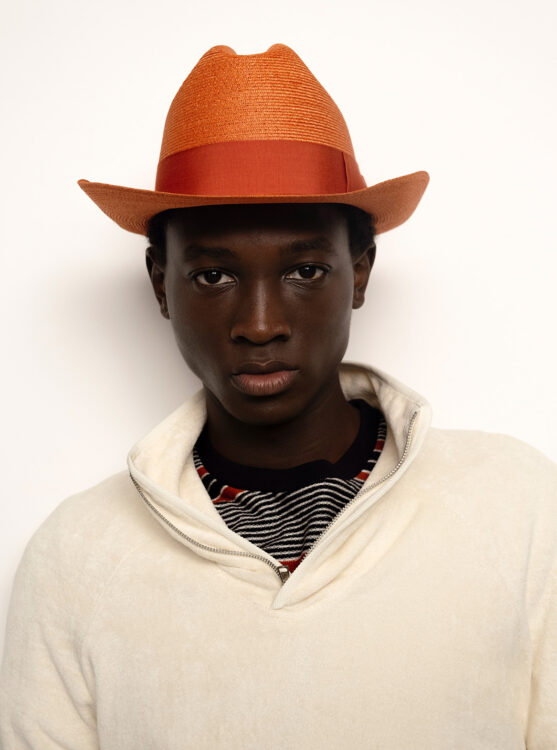
The Borsalino hat is an elegant felt fedora-style hat, first crafted in 1857 by Giuseppe Borsalino in Alessandria, Italy. Known for its pinched crown and wide, curved brim, it is made from fine rabbit or beaver fur felt, shaped through steaming and pressing. Worn by stars like Humphrey Bogart and Alain Delon, the Borsalino became a global symbol of sophisticated menswear. It’s still handcrafted in Italy, representing a legacy of artisanal millinery. image source
5. Capri Pants

Capri pants, the chic mid-calf trousers, were first introduced by Italian designer Sonja de Lennart in 1948, though their popularity surged after being embraced by style icons like Audrey Hepburn and Jackie Kennedy in Capri, Italy. Made from cotton, twill, or stretch fabrics, they’re known for their cropped, slim silhouette—perfect for warm Mediterranean climates. Their name and fashion legacy are forever tied to the Italian island, making them a breezy yet sophisticated fashion essential. Italy’s fashion…
Italy’s traditional fashion accessories.
Fashion accessories are the spice of any fashion recipe, and Italians know that. Italian fashion accessories are as exotic as the are popular Here are traditional Italian fashion accessories.
1. Coppola Cap (Sicilian Flat Cap)
Coppola cap is flat cap worn in Sicily, Campania, and Calabria, as well as parts of Malta, Greece, Corsica, and Sardinia, it’s a rounded wool or tweed cap with a short, stiff brim, originally worn by Sicilian farmers and workers. Now a fashion staple, it’s paired with casual or formal outfits for a smart yet effortless Italian look. Popularized by Mafia films and Neapolitan tailoring, it’s a symbol of Southern Italian heritage.

2. Tyrolean hat:

The Tyrolean hat, though shared with Austria, is an iconic piece of South Tyrolean (northern Italian) heritage. Traditionally made from felted wool or loden, it features a pointed crown, short brim, and is adorned with cords, pins, or feathers like the Gamsbart. Worn in Alpine festivals and hunting events, it symbolizes regional pride. Though not exclusive to Italy, its presence in Italian Tyrol culture secures its place among traditional Italian fashion, especially in folkloric dress and mountain-wear.
3. Sartorial Buttons (Corno, Madreperla, Corozo Nut)
Italian tailoring is known for its exquisite details, including high-end sartorial buttons. Corno (horn) buttons are carved from real horn, often from water buffalo, prized for their natural grain. Madreperla (mother of pearl) buttons are iridescent and elegant, crafted from seashells. Corozo nut buttons, made from the South American tagua palm, are valued for their eco-friendliness and smooth finish. These materials reflect Italy’s devotion to craftsmanship and refinement in even the smallest elements of fashion.
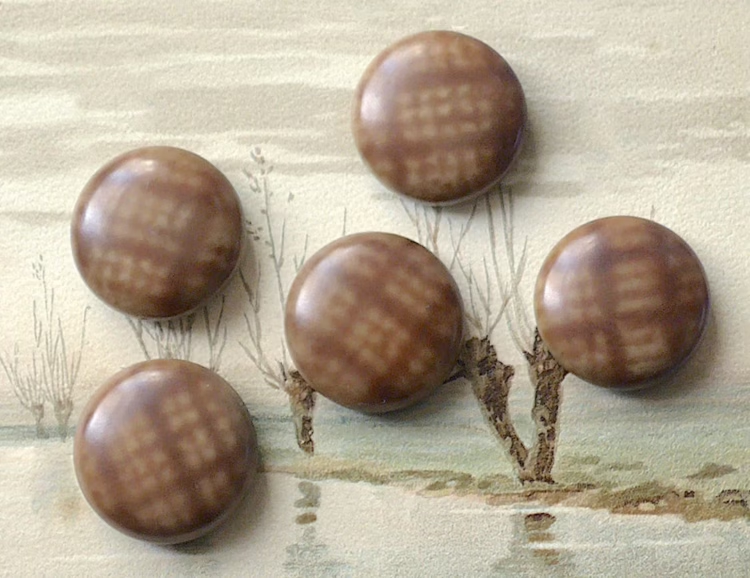
4. Roman Sandals

Roman sandals, or caligae, are ancient leather footwear originating in Imperial Rome. Traditionally made from thick, durable leather, they feature a flat sole and openwork uppers with straps that lace up the ankle or calf. Designed for mobility and ventilation in warm climates, they were once worn by soldiers and citizens alike. Revived by Italian designers, these sandals are now a timeless summer fashion item, blending ancient Roman practicality with modern Mediterranean flair and minimalist aesthetics.
5. Polacchino Boots
Mid-height suede or leather lace-up boots, designed for comfort and durability. Originally worn by Italian workers and Alpine travelers, they became fashionable for their rugged yet refined appeal. Now a staple in smart-casual menswear, they are often seen in earthy tones, paired with jeans or tailored trousers.
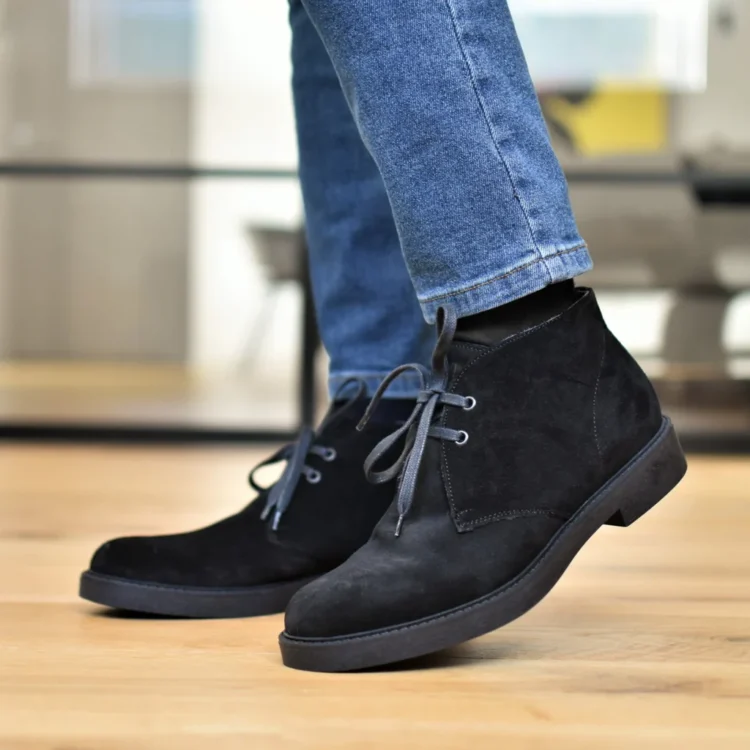
6. Zoccoli
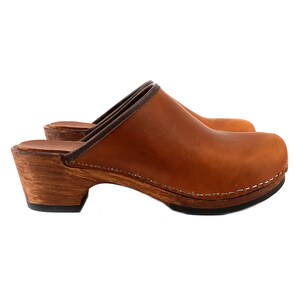
Traditional wooden clogs with a raised sole, historically worn by Italian peasants and craftsmen. Made of solid wood and leather, they provide durability and ventilation. While mostly seen in folk festivals today, modern versions with fashionable embellishments have resurfaced in Italian high fashion.
7. Capri Sandals
Elegant, handcrafted leather sandals with thin straps, adorned with beads, crystals, or metal details. Originating in Capri, they were favored by celebrities like Jackie Kennedy. Designed for chic Mediterranean summers, they are worn with flowy dresses or casual resort wear, embodying laid-back Italian luxury.
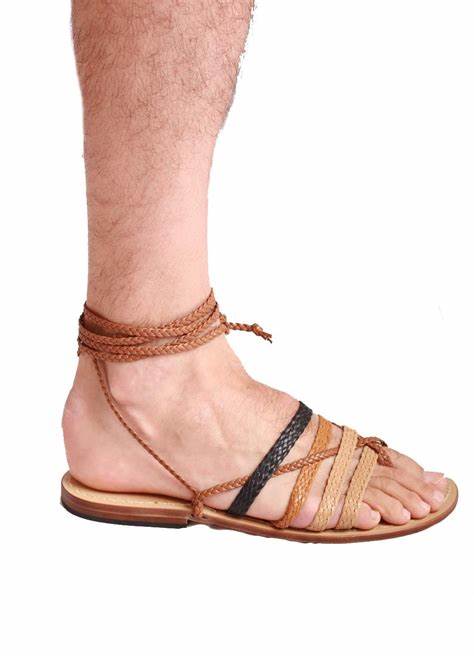
8. Colombina Mask
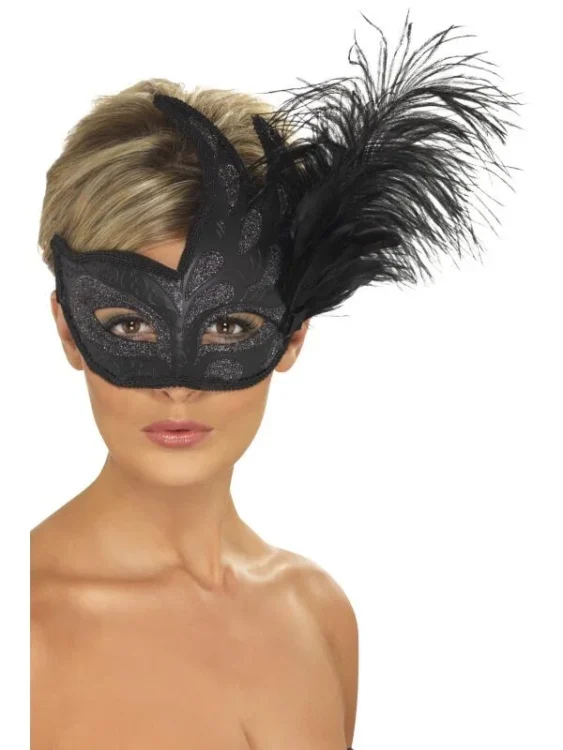
A half-face Venetian mask, covering only the eyes and nose, often made of papier-mâché, metal, or porcelain, and decorated with gold leaf, feathers, or jewels. Originally worn by female performers, it remains popular for Carnival and masquerade events, offering a mystical yet glamorous appeal.
9. Cornicello (Italian Horn Amulet)
A small, curved charm, typically made from red coral, gold, or silver, symbolizing protection against the evil eye. Worn on a necklace, bracelet, or keychain, it’s deeply rooted in Neapolitan superstition and folklore, making it one of Italy’s most iconic talismans.
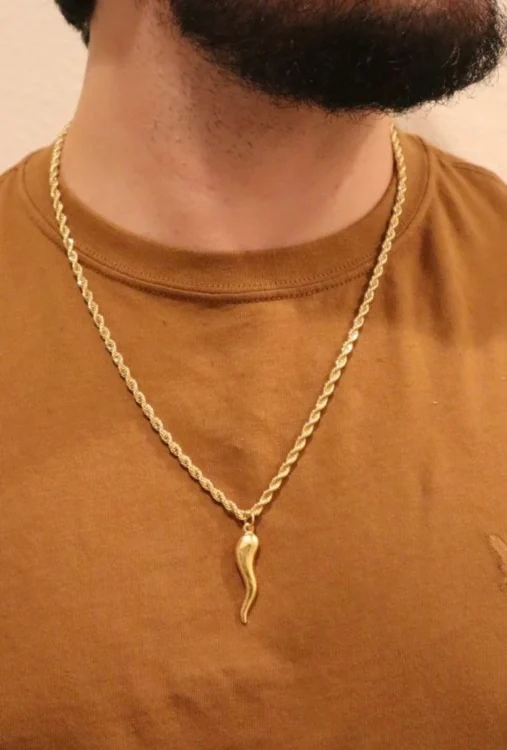
10. Figaro & Venetian Chains
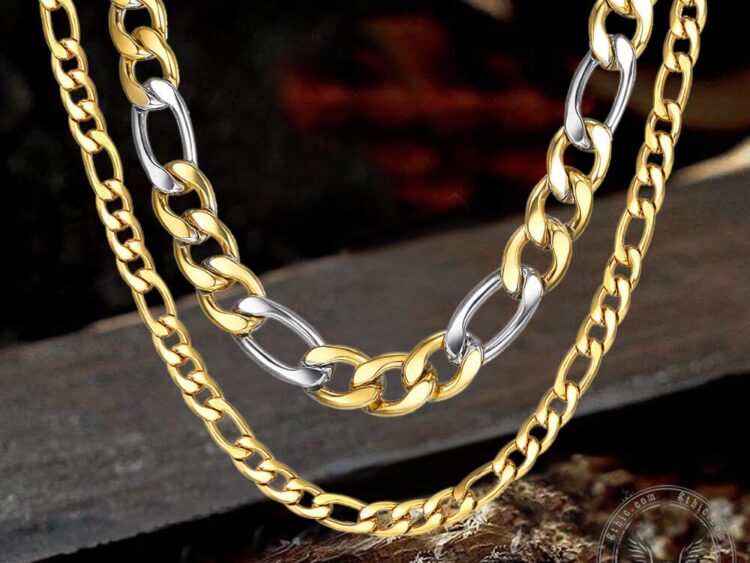
Figaro chains feature elongated oval links alternating with smaller round links, while Venetian chains have box-like square links. Both are crafted in gold or silver and are iconic in Italian jewelry-making. Worn as necklaces or bracelets, they offer a timeless, masculine elegance, favored in classic and modern menswear.
11. Italian Micromosaic Jewelry & Cameos
Micromosaic jewelry is made from tiny glass tesserae, depicting intricate scenes, while cameos feature raised relief carvings on shells or stones, often showcasing mythological figures. Both originated in Rome and Naples, worn as pendants, brooches, or earrings, representing Italy’s rich artistic craftsmanship.

12. Sicilian Carretto Jewelry
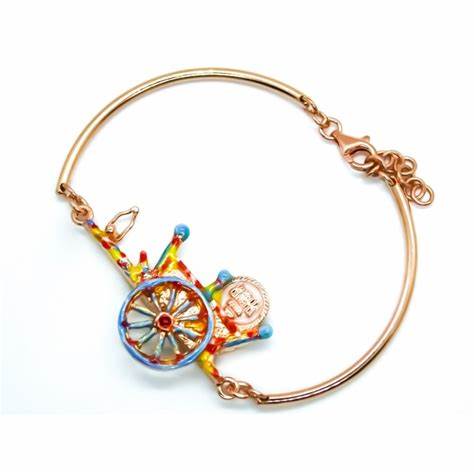
Vibrant jewelry inspired by Sicilian painted carts (Carretti Siciliani), featuring bright enamel, gold, and ceramic beads, often depicting folk art motifs, horses, and religious symbols. Worn as earrings, bracelets, or pendants, these pieces embody Sicilian heritage and artisanal creativity, often paired with bohemian or folkloric outfits.

